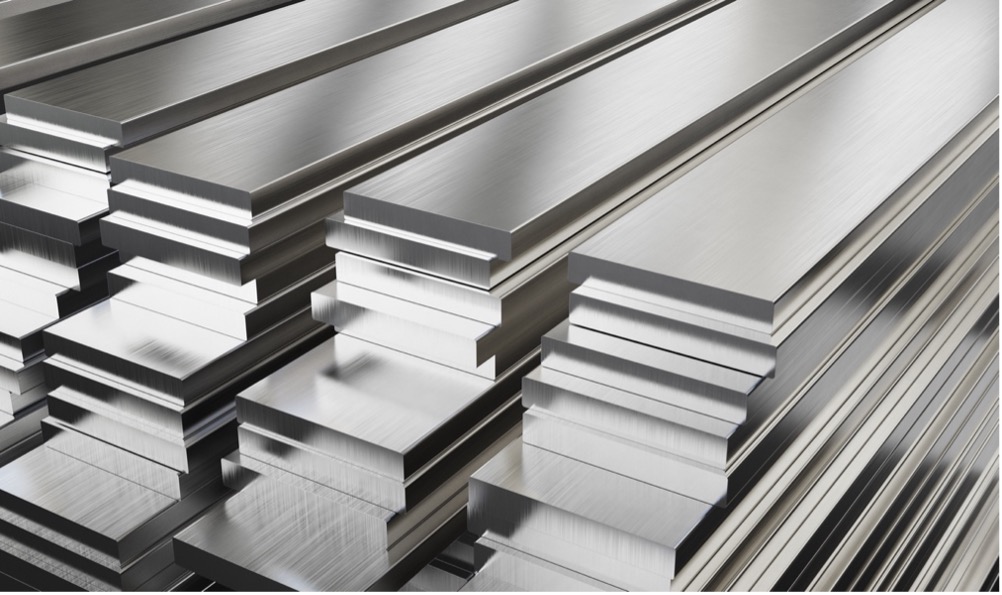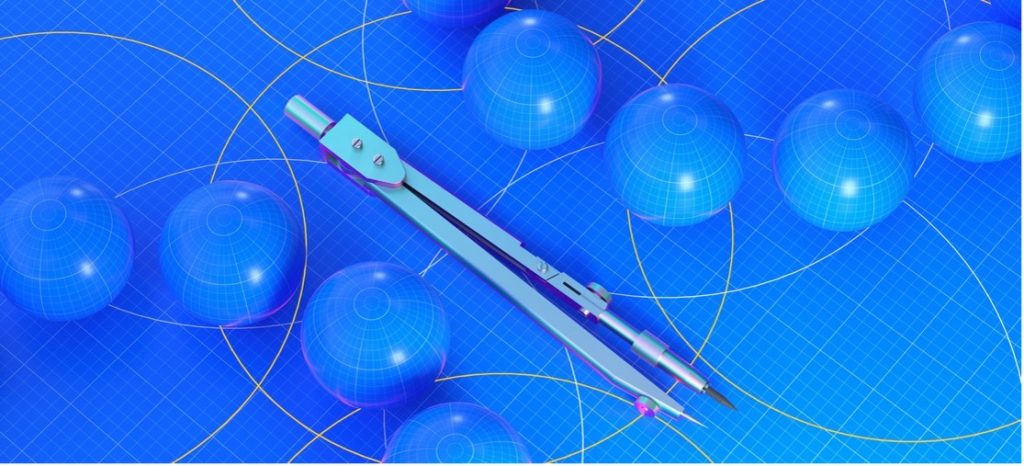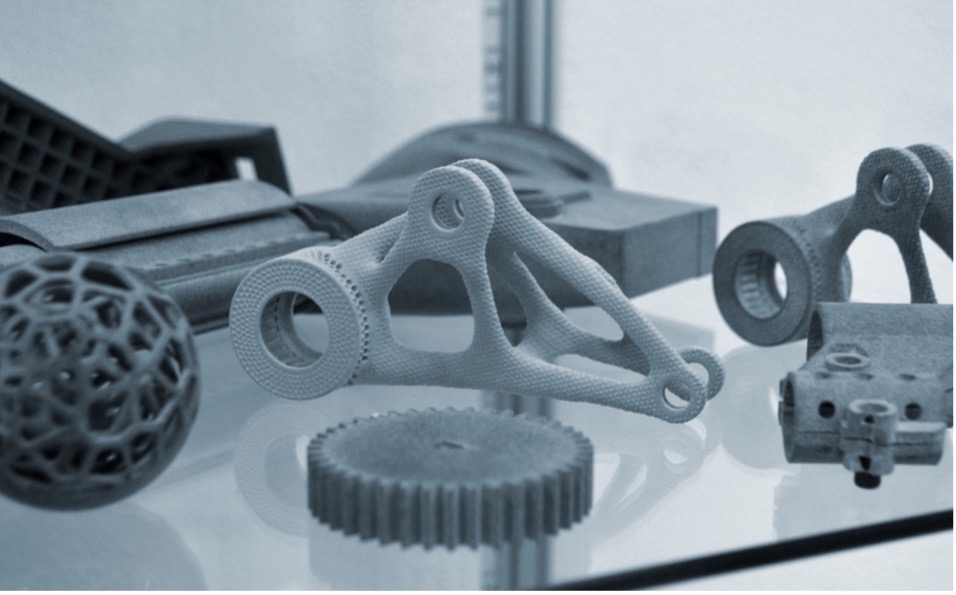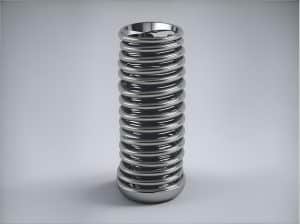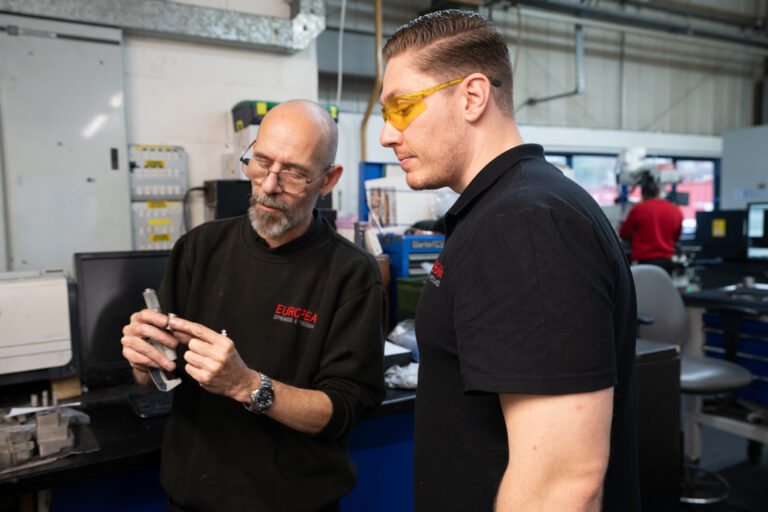
Mechanical engineering finds spring design one of its principal applications, as these functional components are essential across multiple industries, especially in the power and energy sectors. However, spring design has come a long way since its beginning, keeping up with the most significant technological progress.
From traditional springs to advanced materials and complex manufacturing and design techniques, as experienced spring manufacturers, we will explore the forefront of spring design innovations and key developments, offering a glimpse at the industry’s future.
Pioneering Durability and Performance with Advanced Materials and Alloys
We have discussed many times the importance of material selection in spring manufacturing and how different materials can suit specific applications or lead to different results because of their properties. This aspect, in fact, has massively contributed to the evolution—and revolution—of spring design, as innovations in materials science have paved the way for the development of advanced alloys and composites.
Traditional steel springs, such as compression springs, are now being complemented—and in some cases replaced—by more modern alternatives such as titanium alloys, shape memory alloys (SMAs), and other composite materials. These solutions offer superior performance due to their strength-to-weight ratios, corrosion resistance, and fatigue properties, resulting in extended lifespans and enhanced performance in various applications.
On top of that, the introduction of nanotechnology has enabled the production of nanostructured materials with unique mechanical properties, allowing for the design of springs exhibiting unprecedented resilience and flexibility. Thanks to these innovative materials, mechanical engineers now tailor springs to meet specific performance requirements, ensuring outstanding resistance and adaptability like never before.
Computational Modelling and Simulation: Precision Engineering at its Core
Another extremely interesting addition to the world of spring design is the integration of computational modelling and simulation techniques, which have become real game-changers. These advanced technological solutions enable engineers to predict and optimise the behaviour of springs with remarkable accuracy. For instance, finite element analysis (FEA) and computational fluid dynamics (CFD) simulations provide invaluable insights into the structural integrity, thermal stability, and dynamic performance of spring systems, allowing for informed design decisions and reducing the need for costly spring prototyping.
Additionally, advancements in computer-aided design (CAD) software facilitate the rapid exploration of a myriad of design iterations, optimising both spring geometry and configuration to achieve desired performance objectives. The power of simulation-driven design is truly incredible in speeding up the development process and delivering new, ground-breaking spring solutions that exceed customer expectations.
Additive Techniques to Redefine Spring Manufacturing
Additive manufacturing, or 3D printing, has become incredibly important in spring design due to its capability to offer unmatched design freedom and greater manufacturing flexibility. Unlike traditional subtractive manufacturing processes, where tooling limitations often pose a few constraints in shaping the final product, additive techniques make the production of intricate spring geometries easier and allow reduced material waste.
These methods also allow for the integration of complex features, such as internal channels and lattice structures within spring components, improving both functionality and performance. By adopting 3D printing as an essential part of their design process, mechanical engineers get to rapidly prototype and iterate spring types, accelerating the innovation cycle and facilitating the realisation of previously unattainable geometries and functionalities.
Embracing Intelligent Engineering with Smart Spring Systems
Industry 4.0 is creating great excitement in manufacturing, introducing a series of automated and smart processes that could only be imagined before. Smart materials and sensor technologies are, of course, part of the revolution triggered by Industry 4.0 and have, so far, catalysed the development of intelligent spring systems capable of adapting their mechanical properties in response to changing environmental conditions. Here are a few examples of innovative elements that have been incorporated into spring designs to enable dynamic stiffness modulation, self-adjustment, and vibration-damping capabilities:
- Shape Memory Alloys: materials that will return to a predetermined shape when exposed to certain stimuli, typically heat or stress.
- Piezoelectric Materials: substances that generate an electric charge in response to applied mechanical stress or deform when an electric field is applied to them.
- Magnetostrictive Materials: these change shape in response to an applied magnetic field, exhibiting a reversible strain proportional to it.
Finally, the integration of intelligent sensors and actuators within spring assemblies is incredibly useful for real-time monitoring of performance metrics such as load, displacement, and temperature, facilitating predictive maintenance and condition-based monitoring strategies.
Sustainable Design Practices: Balancing Performance with Environment
Current environmental awareness and sustainability concerns are entirely reshaping the manufacturing industry as we have always known it. The adoption of eco-friendly design practices is pushing engineers and manufacturing businesses to increasingly focus on sourcing materials responsibly and reducing material waste, energy consumption, and environmental impact throughout the lifecycle of spring products until their end-of-life disposal.
What’s more, the use of recycled and bio-based alternatives in spring manufacturing is gaining traction, offering a more sustainable alternative to conventional materials, whilst lifecycle assessment tools enable engineers to quantify the environmental footprint of spring systems, promoting greener and more eco-efficient solutions.
Focus On Powering Progress in the Power and Energy Sectors
Among the many sectors that rely on springs as essential components, the power and energy industries deserve special mention. Here, engineers are putting all their efforts into driving progress and making the transition towards cleaner, more sustainable energy sources easier while guaranteeing the overall safety of infrastructure.
- In the power sector, springs are vital in a vast range of applications, from renewable energy systems to conventional power generation plants. Whether used in wind turbines, hydroelectric dams, and solar tracking systems, different spring types, including torsion springs and tension springs, are extremely valuable in maintaining optimal tension, facilitating movement, and absorbing dynamic loads, emerging as enablers of efficiency and reliability.
- In the oil and gas industry, specific spring designs are employed in downhole drilling tools, wellhead equipment, and subsea infrastructure to withstand high pressures, corrosive environments, and extreme temperatures and climate conditions. Without springs, many key activities in this sector wouldn’t be possible!
Keep Up with the Latest Spring Innovations with European Springs & Pressings IE
As we learned, spring manufacturing is constantly evolving. At European Springs & Pressings IE, our priority is to stay abreast of the latest innovations in materials and design to offer unmatched excellence, as our spring catalogue proves.
We boast a fantastic team of dedicated, experienced engineers who are able to deliver the most advanced spring types tailored to meet the most specific needs of our clients. We guarantee that our solutions remain at the forefront of the industry, offering unparalleled performance and reliability. Whatever sector your business operates in, trust us to provide the best spring solutions to bring to life your projects and visions. Contact us today to learn more about how we will meet your requirements and propel your projects forward!
